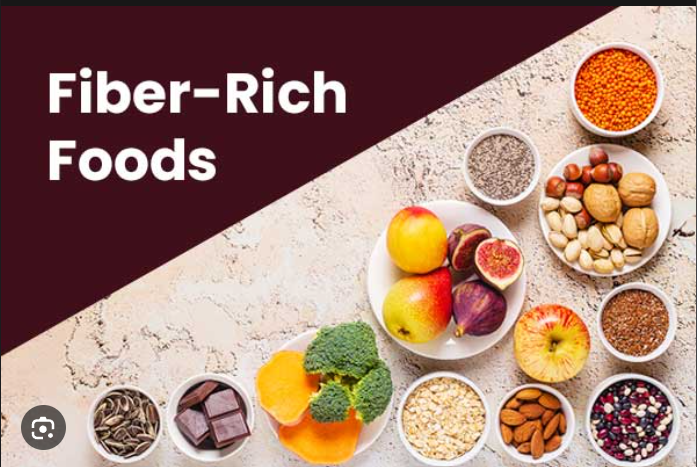Consuming extra fiber can improve a number of health conditions, including blood sugar control, heart health, digestion, and more. The finest high-fiber foods for improving your health and wellbeing are those listed above.
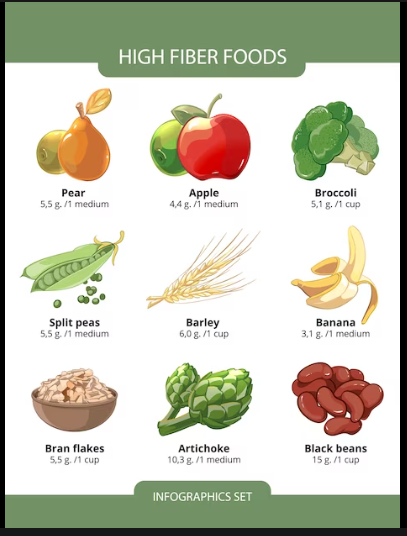
Also read-Excellent Hydration Options With Electrolyte Drinks
Dietary fiber is a non-nutrient because it cannot be digested or absorbed by the body and is only found in plant-based meals, but don’t let that fool you into underestimating its importance.
Why is fiber important?
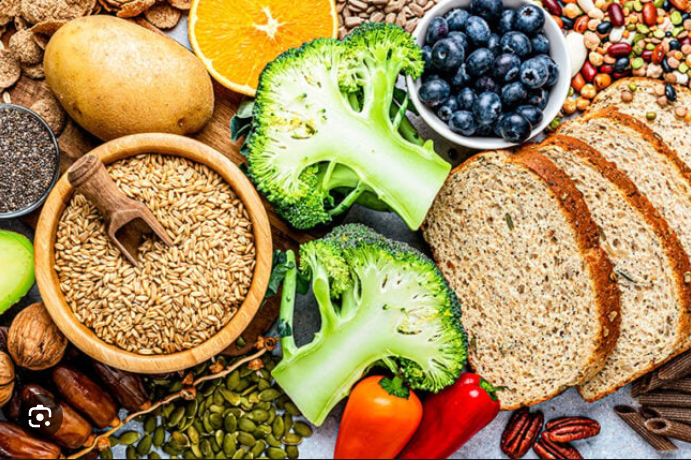
Even though dietary fiber is not technically a nutrient, it offers many benefits far beyond simply preventing constipation. Fiber comes in two major forms: soluble and insoluble fiber. Soluble fiber, which dissolves in water and forms a gel, can help lower blood sugar and cholesterol levels. You’ll find this type of fiber in oats, beans, lentils, nuts, apples, and blueberries.
Insoluble fiber facilitates regularity by passing through the digestive tract relatively undamaged. Wheat bran, brown rice, quinoa, and the majority of vegetables all contain this type of fiber. Prebiotics, which are other types of dietary fiber, support the growth of probiotics in the gut. Jerusalem artichokes, onions, garlic, leeks, and chicory root are among the foods high in prebiotic fibers. Along with improved gut health and weight management, high-fiber diets have been associated with a decreased risk of type 2 diabetes and heart disease.
How much fiber foods should you eat?

Most Americans fail to get enough fiber, averaging only about half the amount that’s recommended daily, which is 25 grams of fiber for women and 38 grams for men. The fiber guidelines established by the Institute of Medicine recommend 14 grams of fiber for every 1,000 calories you consume daily.
In general, whole foods are preferable to fiber supplements or isolated fibers for obtaining fiber. The vitamins, minerals, and phytonutrients present in whole food sources of fiber are absent from supplements and powders. Here is a list of foods high in fiber that you should eat. An excellent source of fiber has 5 grams or more of fiber per serving, while a decent source of fiber offers at least 2.5 grams per serving.
High-fiber foods
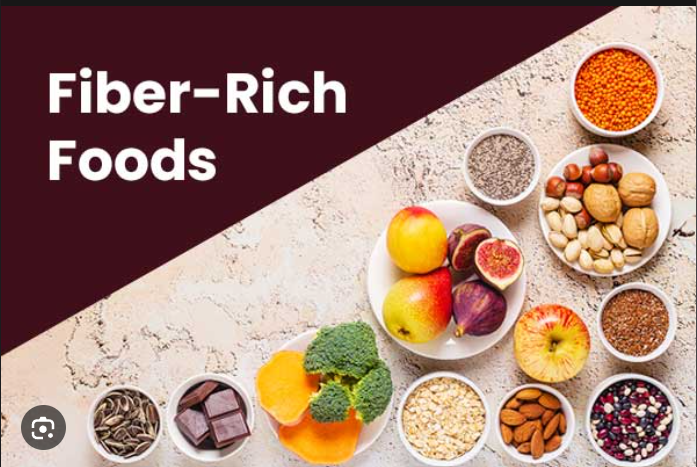
Work on consuming a range of plant foods to mix up the dietary fibers you ingest, rather than being overly focused on particular types of fiber in foods. You can increase your intake of fiber by replacing refined grains with whole grains and filling half of your plate with fruits and vegetables.
The following are the main dietary fiber sources:
- Beans and legumes.
- Nuts and seeds
- Fruits.
- Vegetables.
- Whole grains
Beans and Legumes
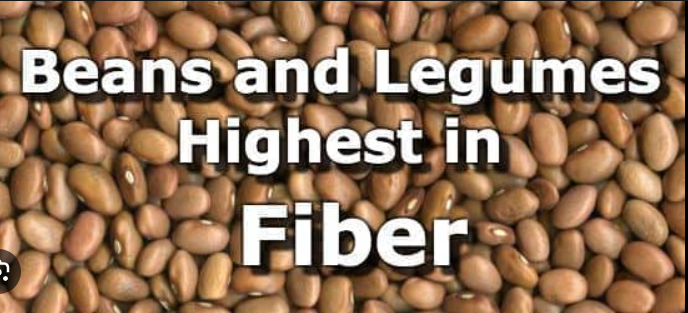
You might not be aware of what a potent source of fiber dry beans and legumes are. However, these plant-based snacks have more fiber than the majority of other foods. Replace meat in recipes with lentils, add beans to stews and soups, and sprinkle chickpeas on salads and grain bowls.
- Navy beans, 1 cup cooked (19.1 grams).
- Black beans, 1 cup canned (16.6 grams).
- Lentils, 1 cup cooked (15.6 grams)
- Pinto beans, 1 cup cooked (15.4 grams).
- Red kidney beans, 1 cup cooked (13.6 grams).
- Chickpeas, 1 cup cooked (12.5 grams).
- Edamame, 1 cup cooked and shelled (8 grams).
Nuts and Seeds
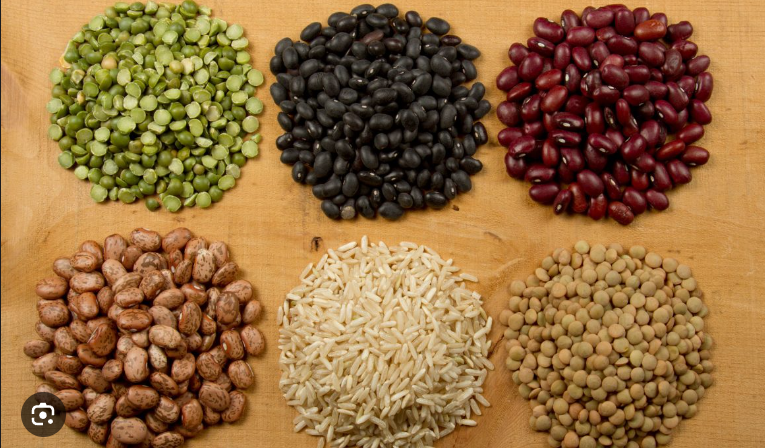
Although nuts and seeds are perhaps best known as sources of good fats, they also contain fiber. Snack on nuts rather than pretzels and chips, include nuts in salads and grain bowls, or top overnight oats with seeds.
- Chia seeds, 1 ounce (9.8 grams).
- Almonds, 1 ounce (3.5 grams).
- Pine nuts, 1 ounce (3.0 grams).
- Pistachios, 1 ounce (2.9 grams).
- Pecans, 1 ounce (2.7 grams)
- Sunflower kernels, 1 ounce (2.6 grams).
Fruits
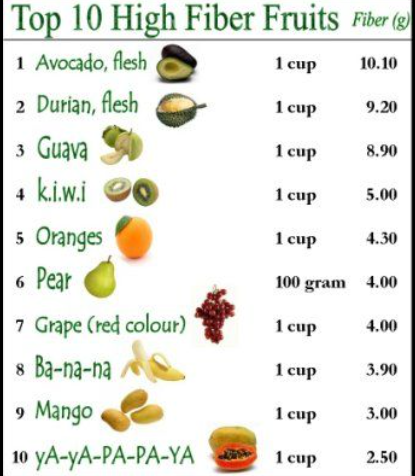
Choose more whole fruits instead of juice to get more fiber. Eating the peels will boost your fiber intake even more. Start your day with at least one serving of fruit by using it to top oatmeal, stirring it into yogurt, or adding it to a smoothie.
- Raspberries, 1 cup (8.0 grams)
- Avocado, 1/2 of the fruit (6.8 grams).
- Pear, 1 medium (5.5 grams)
- Red delicious apple with the skin, 1 medium (4.8 grams).
- Mejdool dates, 3 pitted (4.8 grams).
- Blueberries, 1 cup (3.5 grams).
- Banana, 1 medium (3.1 grams).
- Orange, 1 medium (3.0 grams).
- Strawberries, 1 cup (3.0 grams).
Vegetables

Keep eating your salads, but keep in mind that leafy greens lack the same level of fiber found in other vegetables. Be sure to add more fiber-rich vegetables to your salads, add a side of roasted vegetables to your meals, and snack on crunchy raw veggies.
- Green peas, 1 cup cooked (8.8 grams)
- Broccoli, 1 cup cooked (5.1 grams)
- Brussels sprouts, 1 cup cooked (4.1 grams)
- Baked potato with skin, 1 medium (3.8 grams)
- Baked sweet potato without skin, 1 medium (3.8 grams)
- Yellow sweet corn, 1 cup cooked (3.6 grams).
- Beets, 1 cup cooked and sliced (3.4 grams)
- Cauliflower, 1 cup cooked and chopped (2.9 grams)
What Are Good High-Fiber Foods, Low-Carb Foods?
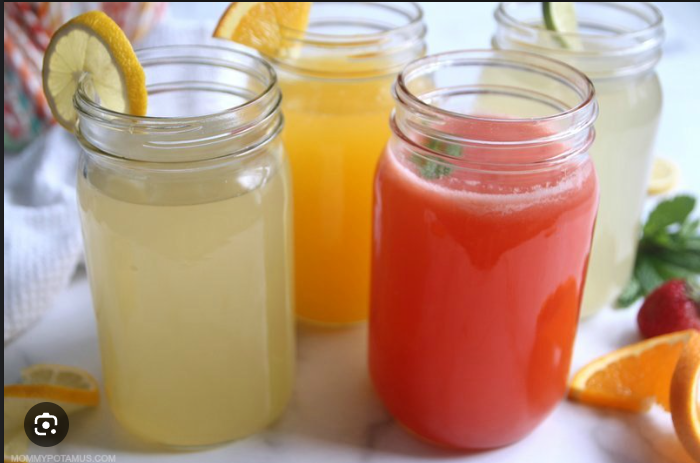
Many people who adopt a ketogenic diet or limit their carbohydrate intake frequently fall short of their daily fiber requirements. However, it is possible to limit carbohydrates while still getting enough fiber. You do not have to sacrifice fiber if you are limiting your intake of bread and grains in an effort to consume fewer carbohydrates. Consider adding extra nuts and seeds to your diet. Choose fruits and vegetables that are low in carbohydrates and high in fiber. Examples comprise:
- Avocados.
- Berries.
- Broccoli.
- Chia seeds.
- Flaxseeds.
- Walnuts and other nuts.
Want to cut back on calories? Increase your consumption of low-calorie, high-fiber foods veggies including zucchini, radishes, cabbage, bell pepper, and hearts of palm.
Also read-Weight Loss And Weight Gain Factors
Images source- Google







